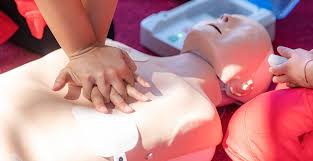Introduction
When it comes to staying healthy and prepared, Condition training and first aid course training are essential. Condition training boosts physical fitness, while first aid training equips you to handle emergencies. Together, they form a powerful combination for a healthier, safer life.
What is Condition Training?
Condition training involves structured exercises designed to improve overall fitness, strength, and endurance. It’s not just about working out; it’s about building a body that can handle various physical demands effectively.
Types of Condition Training
- Strength Training
Focuses on increasing muscle mass and power using weights or resistance bands. - Endurance Training
Improves cardiovascular health and stamina through activities like running or cycling. - Flexibility Training
Enhances joint mobility and prevents injuries with stretches or yoga. - Speed and Agility Training
Develops quick movements and coordination, crucial for athletes.
Benefits of Condition Training
- Improved Physical Health
Enhances energy, immunity, and overall well-being. - Better Athletic Performance
Optimizes strength and endurance for peak performance. - Injury Prevention
Strengthens muscles and joints, reducing the likelihood of injuries. - Mental Health Boost
Releases endorphins that help combat stress and anxiety.
The Importance of First Aid Course Training
Emergencies can happen anytime, and being prepared can make all the difference. A First aid course training provides the knowledge and confidence to respond effectively to injuries or medical emergencies.
What You Learn in a First Aid Course
- CPR (Cardiopulmonary Resuscitation)
A lifesaving technique for cardiac arrest victims. - Wound Care
How to clean, dress, and manage cuts or injuries. - Fracture Management
Techniques to stabilize broken bones before professional help arrives. - Choking Assistance
Steps to dislodge objects from the airway safely.
Benefits of First Aid Training
- Life-Saving Skills
Enables you to react quickly and effectively in emergencies. - Increased Confidence
Reduces panic during critical situations. - Workplace Safety
Promotes a safer work environment by having trained individuals on-site. - Community Impact
Empowers individuals to assist others in their community.
How Condition Training and First Aid Training Work Together
Combining condition training and first aid training ensures not only physical readiness but also preparedness for unexpected situations. Whether you’re an athlete, a parent, or a working professional, these skills complement each other.
Physical Preparedness for Emergencies
Condition training helps you stay strong and active, enabling you to perform first aid tasks like carrying someone or administering CPR without exhaustion.
Enhanced Recovery Through Training
Knowledge of first aid allows you to manage minor injuries from condition training sessions, ensuring a quicker recovery.
Steps to Get Started with Condition Training
- Set Clear Goals
Define what you want to achieve, whether it’s weight loss, muscle gain, or increased stamina. - Choose the Right Program
Select a training routine tailored to your fitness level and goals. - Consistency is Key
Stick to your schedule and track progress over time. - Seek Professional Guidance
Work with a trainer to ensure proper techniques and prevent injuries.
Steps to Enroll in a First Aid Course
- Research Accredited Providers
Look for certified organizations that offer comprehensive training. - Choose the Right Course
Decide between basic first aid, advanced courses, or specialized training like CPR. - Attend Regularly
Participate actively to retain information and practice skills. - Renew Certification
Stay updated with the latest techniques by renewing your certification periodically.
Tips for Combining Training Programs
- Schedule Wisely
Alternate between condition training and first aid classes to maintain balance. - Incorporate Recovery Time
Allow your body to rest and recover after intense workouts or training sessions. - Apply Knowledge in Real Life
Practice first aid skills and maintain a healthy lifestyle through condition training.
Conclusion
Condition training and first aid course training are invaluable tools for personal and community well-being. By staying fit and prepared, you can handle life’s physical and medical challenges confidently. Start your journey today to build a healthier, safer future for yourself and those around you.

